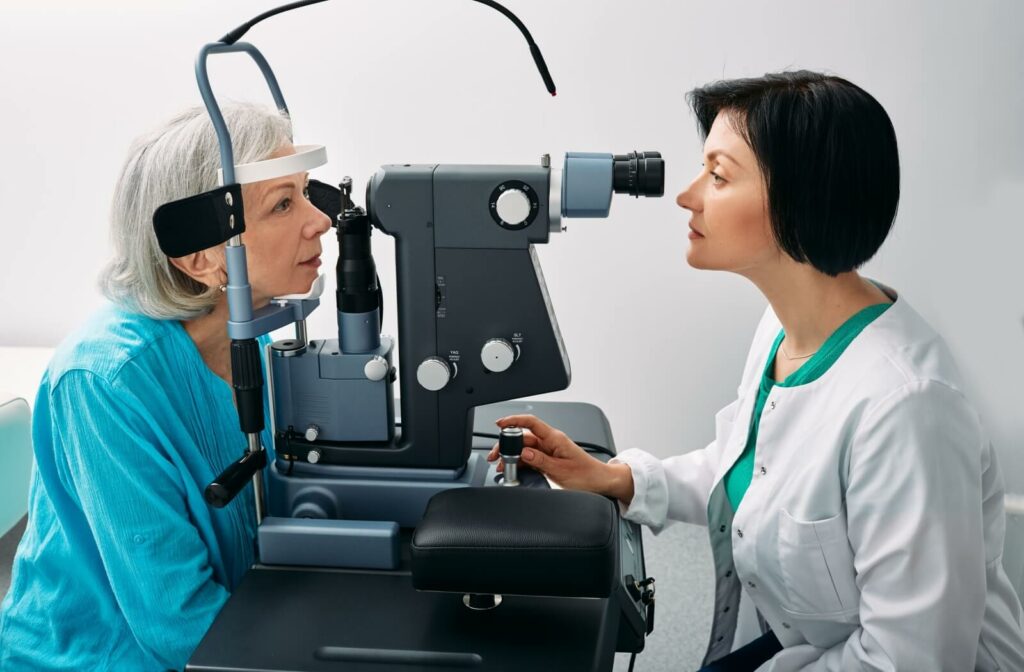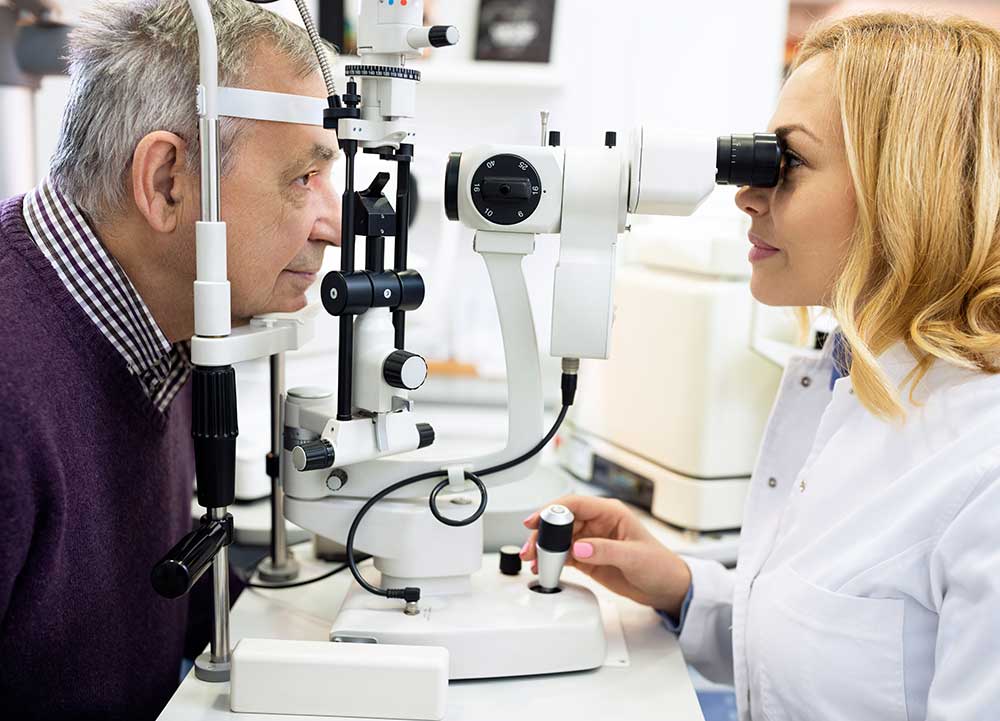Why Picking an Eye Doctor Optometrist is Vital for Your Eyes
Why Picking an Eye Doctor Optometrist is Vital for Your Eyes
Blog Article
Checking Out the current Technical Improvements in Optometry and What They Mean for Optometrists
From the accuracy of Optical Coherence Tomography to the nuanced understandings provided by AI-driven diagnostic devices, these innovations are setting brand-new criteria in individual analysis and treatment. As these advancements penetrate the method, optometrists are faced with the difficulty of accepting these tools to enhance patient results.
Advancements in Diagnostic Devices
Advancing the field of optometry, innovations in analysis tools have actually transformed the means eye care experts evaluate and detect visual disabilities and ocular conditions. The previous years has witnessed significant technical innovations, enabling more precise and comprehensive analyses.
An additional secret innovation is the intro of sophisticated corneal topography systems, which map the surface curvature of the cornea with accuracy. These devices are particularly useful for fitting call lenses and diagnosing corneal problems. Electronic retinal imaging has transformed traditional ophthalmoscopy, using in-depth, breathtaking sights of the retina that promote comprehensive visual examinations.
The advancement of wavefront aberrometry has additionally been critical, enabling the evaluation of refractive mistakes with unrivaled precision (Eye Doctor). This innovation assists in tailoring corrective lenses and improving surgical outcomes for refractive surgical treatments. Jointly, these analysis improvements empower eye doctors to deliver superior patient care, ensuring early intervention and customized therapy approaches, ultimately improving visual health outcomes
AI in Patient Administration
Building on the foundation of sophisticated analysis devices, the incorporation of synthetic intelligence (AI) in individual monitoring represents a transformative leap for optometry. AI systems are significantly employed to improve performance, precision, and customization in individual treatment.
Furthermore, AI-driven systems promote streamlined individual interactions and management processes. Automated scheduling, virtual consultations, and customized follow-up plans not just boost patient satisfaction but likewise maximize time monitoring for practitioners. These systems can triage individuals based on the necessity of their problems, making sure that those in vital demand obtain timely focus.
Moreover, AI boosts decision-making by supplying eye doctors with evidence-based recommendations and treatment pathways. By integrating data from digital health and wellness documents, AI tools offer understandings that educate professional choices, minimizing the danger of errors and improving patient results. As AI remains to advance, its role in patient monitoring will likely broaden, improving the landscape of optometric treatment.
Advances in Retinal Imaging
In the realm of optometry, retinal imaging has seen amazing technical innovations that are improving diagnostic abilities and individual care. Technologies such as Optical Comprehensibility Tomography (OCT) and fundus digital photography have changed just how optometrists examine the retina and picture.
Boosted imaging methods like OCT angiography are additional refining diagnostic precision. Optometrist Chino. Such advancements promote the identification of min retinal adjustments that might signify illness development.
Additionally, innovations in expert system are augmenting retinal imaging by allowing automated evaluation of huge datasets. These systems assist optometrists in determining patterns a measure of pathology, consequently improving diagnostic accuracy and efficiency. Collectively, these advancements are changing retinal imaging right into a cornerstone of contemporary eye treatment, boosting end results and increasing healing possibilities.
Teleoptometry's Expanding Duty
Teleoptometry is significantly becoming an important element of eye treatment, driven by improvements in digital special info interaction and diagnostic devices. This is especially advantageous in underserved and country areas where access to specialized eye care is commonly minimal.
The combination of man-made knowledge (AI) further enhances teleoptometry, making it possible for the evaluation of visual data and assisting in the discovery of ocular problems such as glaucoma and diabetic retinopathy. AI-powered formulas can rapidly interpret complicated imaging data, offering eye doctors with important understandings that boost medical decision-making.
Moreover, teleoptometry sustains connection of treatment through smooth integration with digital health documents (EHRs), permitting optometrists to keep extensive patient backgrounds. When seeking advice from with various practitioners., this makes certain that patients receive consistent and personalized care also.
Despite these advantages, obstacles continue to be, consisting of making certain information protection and taking care of patient assumptions. Teleoptometry stands for a substantial stride in the direction of even more accessible, reliable, these details and patient-centered eye treatment. As technology progresses, its duty is positioned to increase better.

Future Patterns in Eye Care
A myriad of cutting-edge fads is set to improve the future of eye care, driven by technical advancements and the advancing requirements of clients. One substantial fad is the assimilation of synthetic intelligence (AI) in diagnostics, which promises to improve the accuracy and effectiveness of eye evaluations. AI algorithms can examine vast amounts of information from retinal images, potentially spotting problems like diabetic retinopathy and glaucoma earlier than standard techniques.
Additionally, individualized medication is obtaining grip in optometry, with genetic screening educating tailored treatment plans. This method aims to enhance individual end results by tailoring interventions to specific hereditary profiles. Wearable modern technology, such as wise call lenses, is additionally on the horizon, providing real-time tracking of intraocular pressure or sugar degrees, hence giving constant understandings into systemic and ocular health.
The fostering of increased reality (AR) and virtual truth (VR) in training and patient education and learning is an additional emerging fad. These modern technologies offer immersive experiences that can enhance understanding and skills both for optometrists and patients. As these fads progress, eye doctors must stay abreast of technical developments to give sophisticated care, guaranteeing improved patient outcomes and satisfaction in the dynamic landscape of eye treatment.
Final Thought

Collectively, these analysis innovations equip optometrists to provide remarkable individual care, making certain very early treatment and tailored therapy techniques, inevitably enhancing aesthetic wellness end results.

As these modern technologies continue to progress, optometrists must adjust and incorporate them into technique, eventually optimizing operations efficiency and elevating the standard of eye treatment delivered to people.
Report this page